What if the Tomb of Christian Rosencreuz dates back thousands of years earlier? What if it really exists?
As I sit and marvel with my German friends, we look at the diagrams before us and decide together, yes it is time to begin publishing sections of our Rosicrucian teachings. Our Order is a conclave of friends now working under the last two remaining German Rosicrucian traditions to be found, and our goal is to help disseminate the greater European roots of the Rosicrucian tradition, and to help people find out how far reaching the implications of the accepted RC symbols really are and where contemporary initiatory systems stand in terms of the greater ocean of the European western mystery tradition.
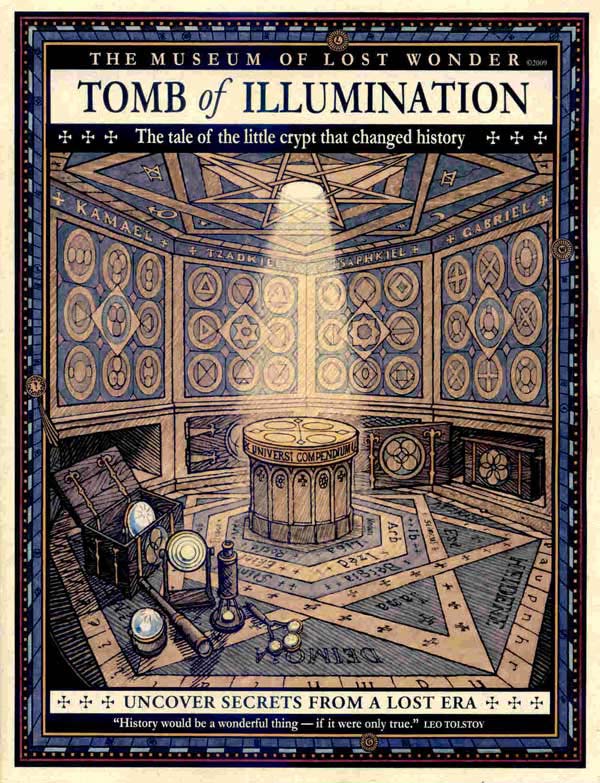 I am now of the opinion that we should focus upon our spiritual work with insight as to a wider perspective of such enriching traditions rather than let ourselves become subject to the idea that the teachings of any Order are perfect in and of themselves.
I am now of the opinion that we should focus upon our spiritual work with insight as to a wider perspective of such enriching traditions rather than let ourselves become subject to the idea that the teachings of any Order are perfect in and of themselves.
Indeed few people in Orders like the Golden Dawn or A.M.O.R.C today realize exactly where their Orders are positioned within the realm of German Theosophia and Pansophy, and that such a position exists.
Our Order has decided to relate this greater relationship and explain the hierarchy between cosmic scales, the path to Regeneration, and how exactly the differing esoteric Orders offer varying steps upon this ladder of initiation. Indeed very few Orders offer them all under one roof. In order to begin this quest of disseminating what we have inherited here in Germany my first article covers the ancient origins of the Rosicrucian tomb of Christian Rosencreuz.
From the Rosicrucian manifestos, namely the Fama Fraternitatis published in the early 1600’s, we learn of Christian Rosencreuz’s tomb through a symbolic description of the rediscovery of occult wisdom in the Arabian East and its return and reformation to the West. The document relates the existence of a secret Rosicrucian brotherhood which culminates in the fulfillment of a prophecy, that after 120 years the tomb will be opened. Seemingly unique to the Rosicrucian mythos, the Tomb of CRC has seven sides, containing books of wisdom in seven cabinets inlaid within each wall. Inside is the never decaying body of CRC, and upon his coffin rest a circular altar. Christ is named as lord several times in the document declaring the absolute Christian nature of the brotherhood and their teachings, until of course we learn that Venus appears as prominent figure in the third Rosicrucian manifesto, the Chemical Wedding.
While many assume that the Rosicrucian symbols are strictly Christian, they ignore the importance of Venus and her appearance in the Wedding. Not only that but we must go deeper into the facts. Johan Valentine Andrea (the author of the Fama) assisted Princess Antonia in the creation of a Rosicrucian church, inside of which is a painting revealing the Rosicrucian Cabalistic Tree of Life. This painting also highlights Venus as well as Mercury as divine figures, presented alongside the Holy Trinity. These findings make better sense when we learn that Johan Valentine Andrea also helped coin the word ‘Pansophy’ with John Amos Comenius. While largely thought to be an education system for school students, we in fact find that Abraham Von Frankenberg, the publisher of the works written by his friend Jacob Boehme, named his Rosicrucian circle as ‘Panshophist’ in Silesia. Interestingly some years later Samuel Richter published the Rosicrucian D.O.M.A out of Silesia as well. According to letters from Von Frankenberg, Silesia was the place where seekers of the Rosicrucian brotherhood visited and it was he who drew a real diagram of the circular altar described in the Fama. The philosophy of his group was named Pansophy, a term which I will elaborate upon in several up-coming publications from Germany.
Briefly speaking, Pansophy is the Hermetic twin of the Theosophy of Jacob Boehme. Where Theosophy deals with strictly Christian symbols, Pansophy embraces a wider range of symbols, yet both follow the same initiatory cycle, even replacing Boehme’s Sophia with Venus. It is here through Sophia, whose name means Wisdom, that we may begin our search for the real Tomb of CRC.
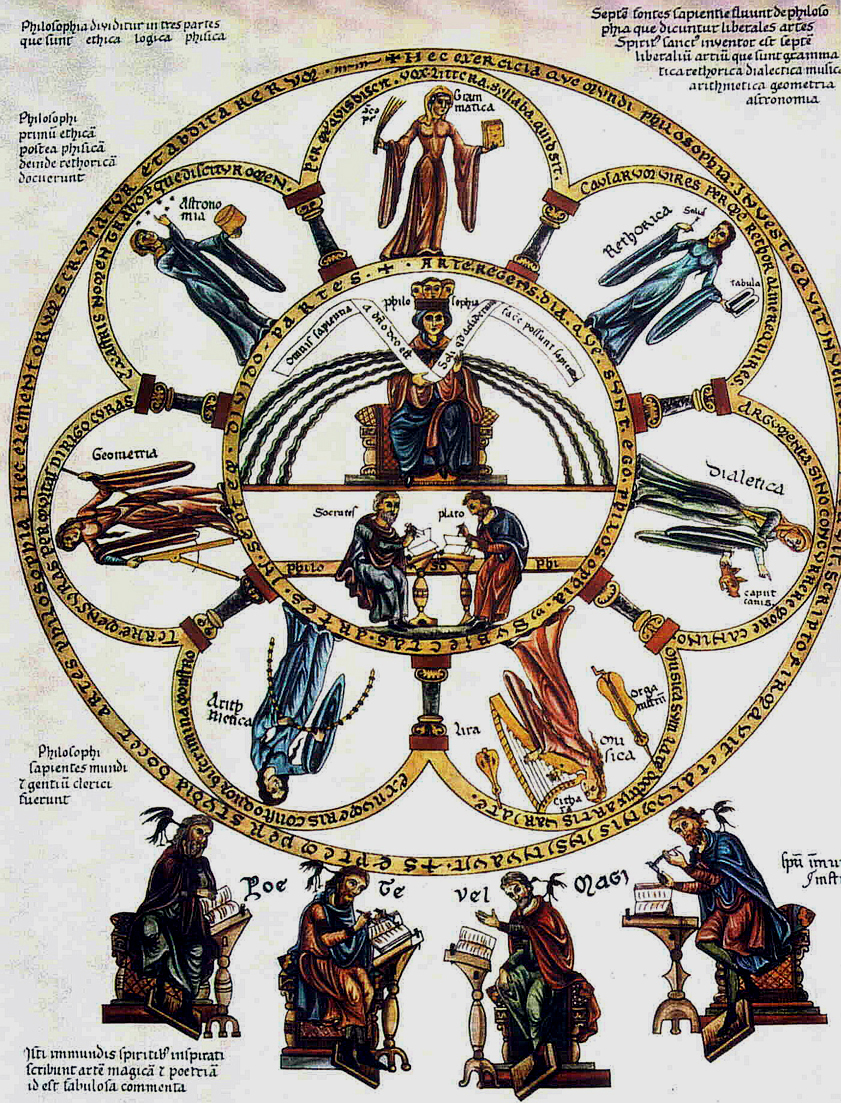 Most modern Rosicrucian groups have assumed the seven sided tomb of Christian Rosencreuz is a unique occurrence, describing such a planetary geometric vault of wisdom as particular to the Rosicrucians.
Most modern Rosicrucian groups have assumed the seven sided tomb of Christian Rosencreuz is a unique occurrence, describing such a planetary geometric vault of wisdom as particular to the Rosicrucians.
Yet Wisdom is clearly described as having built one similar such structure in the Bible. Proverbs 9.1 ‘Wisdom has built her house. She has carved out seven pillars of wisdom.’ At first glance these pillars appear very different from walls, and yet the Bible insist several times that the temple is either ‘built on the foundation of the apostles and prophets, with Christ himself as the chief cornerstone’[1] which suggest the idea that Biblically a temple can be made up of people, where ‘you also, like living stones, are being built into a spiritual house to be a holy priesthood.’[2] The Rosicrucians knew this ideal well, and such ideas were prominent in early Protestant Orders, yet what is important here is the insistence that spiritual humans, such as apostles or prophets are being built into a spiritual house, but how does this relate to the seven pillars of Sophia’s temple?
Image of Sophia from Hortus Delicarium of 1185, showing Sophia surrounded by female figures representing the Seven Liberal Arts, nourishing them with her divine milk representing the seven holy gifts
Clearly in the Hortus delicarium by Herrad von Landsberg we find an image of Sophia nourishing seven female images, and like Solomon’s Sophia she is surrounded by seven pillars, nourishing them with seven holy gifts in her milk, which depicts the ancient scene. Here the seven figures, whatever kind of ‘divine person’ they may be, represent some sort of higher human quality or art of eloquence.
 The ancient world knew very well of seven divine figures, upon which such a holy temple might be built as the Bible suggests. Plato names them as the Seven Sages of Greece. Their names are listed in the image, and what is striking is that akin to our seven arts, depicted surrounding Sophia as her pillars, these sages likewise stood for seven kinds of wisdom.[3] They were sages dedicated to the god Apollo and encircled an Apollian divine Cup of the Gods.
The ancient world knew very well of seven divine figures, upon which such a holy temple might be built as the Bible suggests. Plato names them as the Seven Sages of Greece. Their names are listed in the image, and what is striking is that akin to our seven arts, depicted surrounding Sophia as her pillars, these sages likewise stood for seven kinds of wisdom.[3] They were sages dedicated to the god Apollo and encircled an Apollian divine Cup of the Gods.
What’s significant to our investigation is that apparently in the European stream (which entwines the so far mentioned Platonic with Christian perspectives into common thought,) our forbearing European mystics were certainly aware of seven divine men, or seven virtuous qualities which surrounded Wisdom as seven human embodiments of pillars that form some kind of spiritual temple.
Dante then appears on the scene in 1308 with his Divine Comedy. Through his vision of hell, titled the ‘Inferno’ he also presents us with a seven sided castle. All commentators have seen its’ seven sides as representing the seven Liberal Arts and the seven portals or doors as the seven virtues. Inside he also encounters seven different pagan philosophers and sages who must remain. The appearance of such a castle brings Wisdom’s Temple much closer to the seven sided Tomb of CRC. However all of this seems to lack the same enigmatic symbols of Christian Rosenkreuz’s tomb until of course we start looking at the German myths which also helped lay the foundations for the creation of our Rosicrucian tradition.
So far we have the seven sides, some sort of stone structure, and the knowledge that it was the Temple of Wisdom, but what about the coffin inside the structure and the other Rosicrucian objects mentioned in the Fama? Enter Snow White and the Seven Dwarfs, where we encounter a sleeping beauty it seems. Thus on our quest of uncovering the truth we must now to turn to the Grimm brothers to whom we are indebted as they recorded and combined several old German myths into symbolic children’s tales.
In this legend Snow White is surrounded by seven dwarfs who in contrasts to our seven virtues or arts represent instead seven types of ignorance. Given names such as Clumsy, Dopey and Sleepy this German depiction of a widely known European tale represents what the Gnostics described as the Fallen Sophia, especially given that Snow White has fallen into her slumber after eating an apple, an apple which could only be the apple of Eve in the fall of humanity, hinting at the Rosicrucian doctrine of the Fall of Man and our Regeneration. This time she isn’t surrounded by seven sages of virtue. The very appearance of the dwarfs, with their child-like stature and grey beards is a clear symbolism of ‘stunted knowledge.’ The whole comedy is a drama of entering into ignorance, and false knowledge. Significant to our R.C investigation, as according to the German legend, she is sleeping inside a glass coffin. This might all seem as fanciful similarities, yet the plot thickens my friends. The Grimm brothers based their version of this old European story upon a woman known to them. Her name was none other than Maria Sophia.[4]
Snow white in her glass coffin surrounded by seven sagely looking dwarfs[1]
However the Grimm brothers were not alone in their creation of the legend. They had drawn upon known legends of the time, thankfully preserving them for a future generation. Many such legends were in circulation and one of the more ancient versions was recorded in the 4th century by Jacob of Saron. This time all seven figures of the legend fall asleep as a collective group. There is no coffin but instead a cave. The famous legend is titled ‘the Seven Sleepers of Ephesus’ and is a Christian tradition recounting a group of early faithfuls who hid themselves within a cave at about 150 AD, in order to escape persecution. Accordingly they fell into a miraculous sleep and awoke some 200 years later, only to discover that the whole Empire had become Christian. (This story is also mentioned in the famous Suras of the Koran.) Another important point for later is how Goethe in Germany writes that the seven sleepers were guided to their cave by a shepherd, who appears to be none other than Hermes-Mercury and leaves his shepherd watchdog to stand guard over them during their timeless slumber.
Now we have records of caves or a castle of seven sides, 7 sages or mystics, perhaps sleeping themselves or surrounding a sleeping Maria Sophia, who lies perfectly inside a glass coffin.
All of this comes together with the missing key to the Rosicrucian legend. As I stated, the Rosicrucian tradition must be seen as existing within a greater array of diverse European tales and lore.
Within our own Rosicrucian tradition the Rosicrucian Tomb, as presented in the third degree of initiation, is explained as being not only the Tomb of CRC, but also as being the Sleeping Vault of King Arthur. All of this perhaps seems fanciful, as at first glance King Arthur doesn’t seem to have much to do with the Rosicrucian legend. There are of course hints. Carl Jung demonstrates how Merlin is a corruption of the ancient ‘Merculinus’ being an alternative form of Mercury so that here our magician Merlin is brought well within the realm of the Hermetic tradition as a guide to the solar King Arthur. Arthur himself we are told is a corruption of Arthuros, being none other than Art-Horus, or otherwise the solar child Horus, as the warrior child of Uthur Pendragon. Following our quest for the Temple of Wisdom, it would appear the Lady of the Lake is none other than Sophia herself.
These Hermetic elements are crowned by an all-important twist to the King Arthur and Snow White legend. The penny drops when we learn that in the Italian version of the Snow White legend she is protected by seven sacred knights instead of dwarfs and it is here we must turn to the King Arthur legend of the Castle of Seven Shields. Yes, that’s right, Arthur himself, along with seven of his loyal knights, are sleeping within a tomb of seven shields, just like Snow White. Next to Arthur is his wife Guinevere. Just how closely this matches the Rosicrucian legend and those already covered will be examined below. For now, I insist all Rosicrucian students read the following legend carefully.
The tale is connected with a place named ‘Sewingshields’ in Northumberland, in north east England, where this fortress, now in utter ruin, is just a short distance from the Roman Wall and is just nearby the Northumberland Lakes. In Hodgson’s version of the story seven of Arthurs Knights of the Round Table slumber and wait with him for the day of his awakening.
Here is Sir Walter Scott’s version of the Sewingshields legend and it differs on several points.
Scholars have commented the myth may have arisen to account for the name of the place as ‘Sewingshields’ is old English for ‘Seven Shields’ and others have stated the name arose out of the historical existence of seven shepherds’ huts which surrounded the lake of Northumberland, which later became the Seven Knights of the Round Table.[8] Again, like the sages, they represent seven qualities or types of arts or virtues, as seen in the names of King Arthur’s Knights. Here the protectors of the Maiden have evolved from being dwarves, as representative of stunted knowledge, to a state of wiser knowledge or virtue, in the form of valiant knights. It is only fitting that the seven sages should be replaced by knights in times of chivalry and kings. Thus according to the Italian Snow White legend, and Sewingshields there are seven knights surrounding the Round Table of King Arthur and Sophia.
King Arthur and his Knights at the Round Table, who are 7 in the Tomb Legend
Comparing the Two Vaults of European Tradition
In comparing the Tomb of Christian Rosencreuz and the Vault of King Arthur we find similarities:
Tomb of CRC Located beneath the College of the Holy Spirit The tomb is interior to the cloister Discovered as predicted by a prophecy Vaulted tomb with symbolic walls An ever burning lamp lights the center above Treasure: books of knowledge Christian Rosencreuz has an incorruptible body Round altar, covered in holy writings Symbols of the four kerubim guard at the entrance | Vault of King Arthur Located beneath the Castle of Sewingshields The vault is interior to a subterranean cavern A magical thread guided the shepherd in Vaulted hall with carved walls An ever burning fire without fuel at the center Treasure: Spell dissolving horn, sword, garter Arthur, his wife and knights are sleeping Round table, covered in green cloth Like the Seven Sleepers myth, hounds stand watch |
These striking similarities bind the King Arthur tradition to the Rosicrucian mythos once and for all, which helps us in Germany delve into the ‘Mystical Universal Sanctum’ after which our Order is named. Without covering too much detail, I should add that it would be a mistake to assume the Rosicrucians merely hijacked the Aruthian legend of England, seeing that there are yet older examples of such kingly tombs in Germany, which also contain an ever glowing light.[i] (See endnotes) One important version, being that of the German Emperor Frederick Barbarossa states that he shall wake up from his tomb, which likewise has ever present sunlight inside and seven knights. Here a prophecy is given declaring that on that day of awakening he shall exalt Germany, crowing it the first of nations in Europe.
Germans knew such legends as common knowledge and were aware of its prophecy as well. What this means is that, in the manifestation of the Rosicrucian legend, the Rosicrucians through describing their discovery of such a symbolic tomb were heralding the fulfillment of this prophecy. They were playing upon known traditions and the deep roots of the German folk. The discovery of the tomb of Christian Rosencreuz proclaimed that the TIME WAS NEAR, soon we shall rise as a nation, and they were using this myth to spark life into their call for a universal spiritual and cultural reformation across the continent. Many intellects were looking for another savior of society, even more radical than the Protestant reformer Luther himself, and the Rosicrucian myth of the tomb was the answer.
Gold und Rosenkreuzer image from the German brotherhood of 1777. Later Rosicrucian Orders would use their 9 degree system. This image derives from their Adeptus Minor ritual, showing the original formation of the ‘ceremonial’ CRC Tomb. Later the Adeptus Minor grade would be used in England as an actual seven walled vault. This is the original described by the Fama – 7 R.C Brothers surrounding CRC himself, embodying the 7 Sages of Greece surrounding Apollo for the reformation of the world.
As Arthur Waite points out in 1614, the same time as the Rosicrucian publications, a pamphlet was anonymously published in German called ‘Die Reformation der Ganzen Wieten Welt’ or otherwise ‘The Reformation of the Whole Wide World’ which contains a proposition for the founding of a secret brotherhood, which should have as its main objective the spiritual health of humanity. It is a German translation of Trajano Boccalini’s work in Italian, telling the same story. The original Italian title is none other than ‘A Universal Reformation of the Whole Wide World, by Order of the God Apollo, to the Seven Sages of Greece.’ Inside we learn that the god Apollo is dissatisfied with humanity, that in his eyes we have fallen into cultural vulgarity and that his solution is to send out the Seven Sages of Greece, who in their wisdom will form a secret society which shall enlighten and reform the culture of humanity.
In light of these discoveries and histories, we can now see that the Rosicrucian tomb and manifestos are none other than the fulfillment of both a German prophecy as well as an Italian call for cultural reformation. These combined together form the basis of the Rosicrucian legend and breathe life into the seven sided tomb we have explored, seeing that we as modern Rosicrucians, if we are to call ourselves by that name, are intended to become the living activity of an idea, an idea of enlightenment and hope for the future, bringing change, even radical change, when civilization needs us most. As this paper suggests, CRC and his seven brothers are the incarnations or representatives of the Seven Sages of Greece and Apollo himself at the center, answering the great call for change in our world, thus setting an example for us to represent and embody the same ideas and the myths in flesh, demanding of us that we, as living contemporary Rosicrucians, must enliven and enable this great philosophy of Gold, becoming the Pillars of Wisdom’s Temple and becoming, like knights, champions of a better world.
As an initiate of the German system and finally looking back and pondering upon the way the tomb of Christian Rosencreuz mirrors all these qualities, including the seven sages, ancient fairy tales, and Apollo himself, all within the knightly romantic realm of King Arthur and his tomb, as well as the other ancient cave slumbering kings of Germany, is why for me the Tomb of CRC is not a myth, but rather a place to close my eyes and meet the ghost of the past, of ancient kings, philosophers and gods who wished to inspire us. And sometimes, just sometimes, if we listen carefully, we can hear them.
Samuel Robinson
[2] Peter 2.5 [3]Cleobulus of Lindos, Solon of Athens, Chilon of Sparta, Bias of Priene, Thales of Miletus, Pittacus of Mytilene and Periander of Corinth. [4]Maria Sophia Margaretha Catherina von Erthal, who was born in Lohr am Main in 1725, who like the Grimm’s story had a truly wicked step mother in real. The talking mirror can be seen today at Spessart Museum in the Lohr Castle [5] Image in use from Public Domain. [6]Hodgson’s “History of Northumberland” [7]Cowper’s Homer’s Oddyssey [8] While some versions attribute the Round Table with 12 Knights, the tradition of Seven Knights is demonstrated here. END NOTES
[i]“Seven men who sleep and long have slept, in a den, under a cliff of ocean, in the uttermost parts of Germany, where there is snow all the summer-time, and in the winter, though men see the light of the sun, yet the sun is not seen! All men may see them there; they are sound in body; their color is not changed; neither do their garments wax old; and therefore the people hold them in great worship and reverence. A covetous wretch once attempted to strip one of them of his clothing, and his impious arm was dried up in the attempt.”[i]
[ii]“A yet earlier German legend exists concerning the Germanic Emperor Frederick Barbarossa who is said to reside in the Kyffhauser Mountain. His tomb was said to be last seen in 1669 and likewise he sleeps immortally surrounded by seven of his warriors. His beard has grown so long it has broken through his round table, and other legends say that when his beard ‘winds itself exactly three times around his round table the end of times has come.’ He shall wake up and become the last Emperor on earth. Other legends state that he will rise to lead Germany once again, and he and his sleeping seven knights shall free Germany and exalt it as the first amongst nations in Europe.



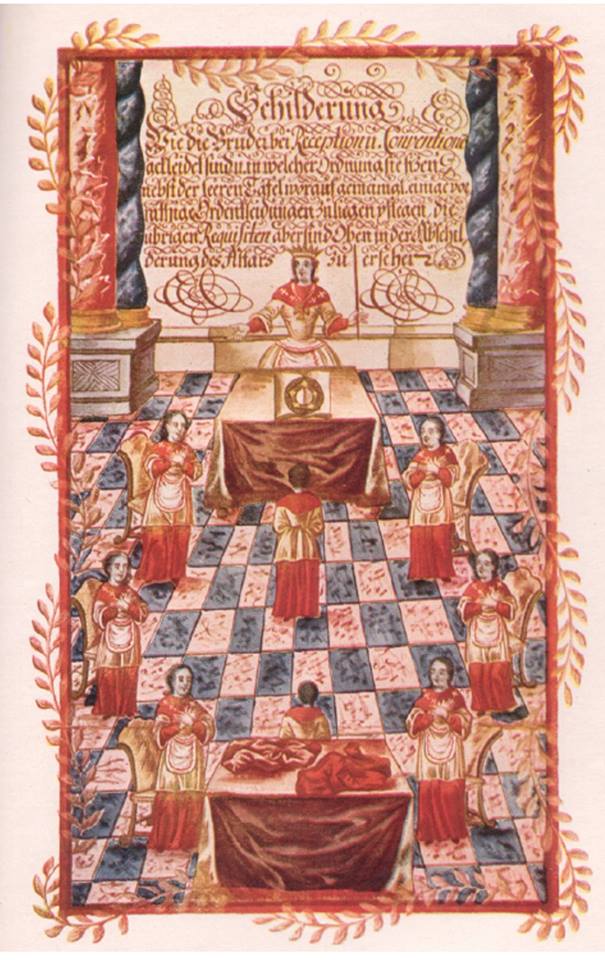

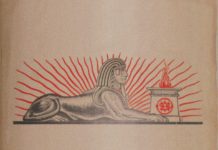
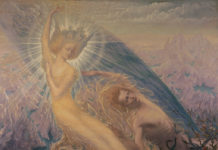







This was an eye opener excellent logical argument connecting it all together!